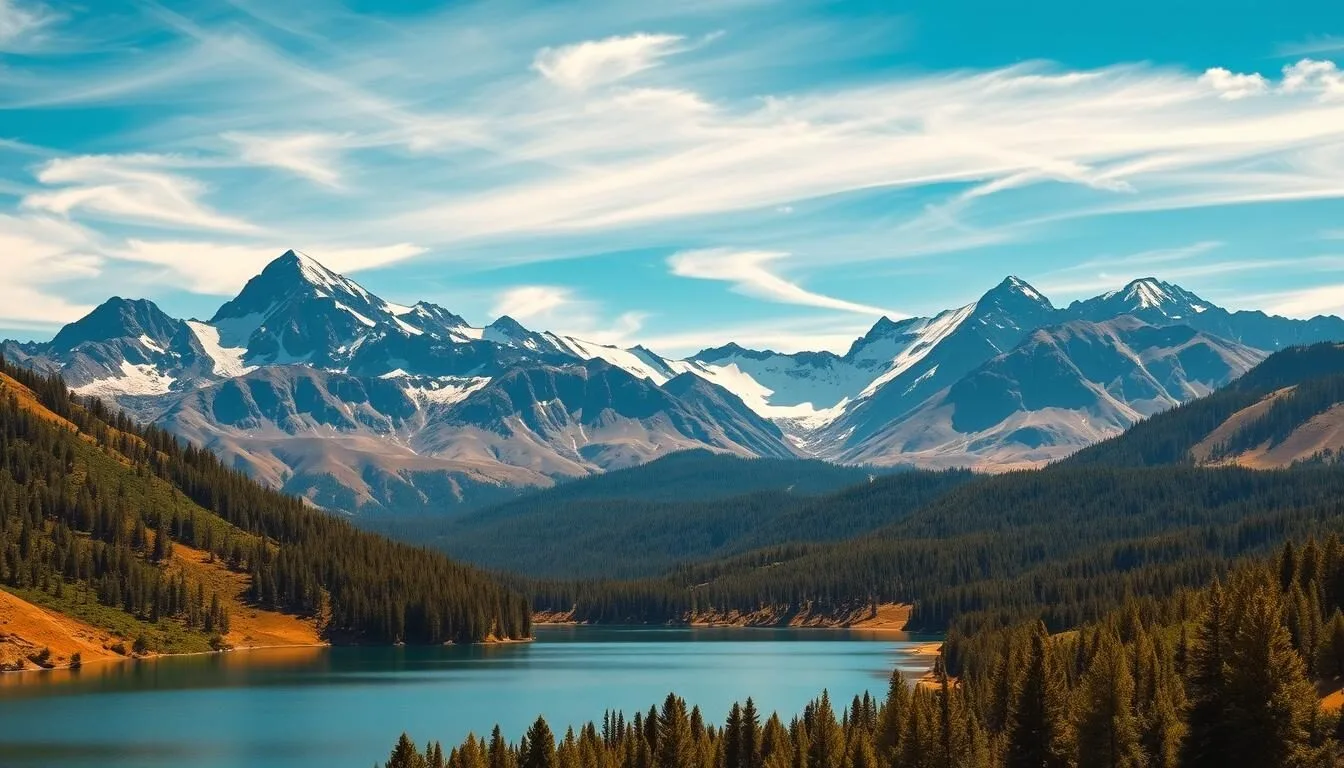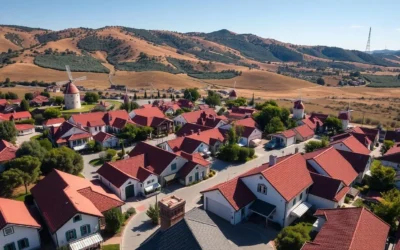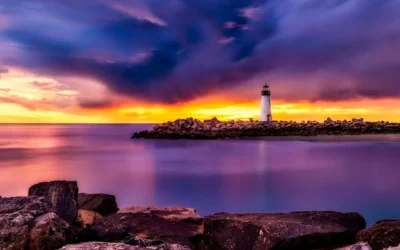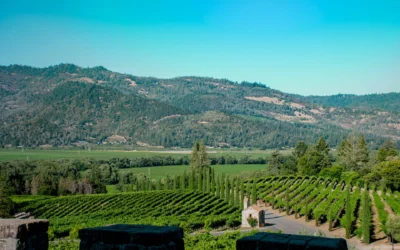You might be surprised to know that Lassen Volcanic National Park is home to the largest plug dome volcano in the world, Lassen Peak. Located in the heart of Northern California, this geologically active area is a treasure trove of volcanic wonders, including steaming fumaroles, boiling springs, and crystal-clear alpine lakes.
Unlike more crowded national parks in California, Lassen Volcanic National Park offers a more intimate experience with nature, making it perfect for travelers seeking both adventure and tranquility. As you explore this hidden gem, you’ll discover a diverse landscape of volcanic features that rival more famous destinations.
This guide will introduce you to the top attractions and activities in Lassen Volcanic National Park, from challenging hikes to accessible viewpoints that showcase the park’s unique geological history.
Discovering Lassen Volcanic National Park
As you venture into Northern California, you’ll discover a hidden treasure that showcases the region’s unique volcanic landscape.Lassen Volcanic National Parkis a gem that offers an unforgettable experience amidst its volcanic peaks and serene lakes.
The Hidden Gem of Northern California
Lassen Volcanic National Park is situated in the Cascade Range of Northern California, approximately four hours from San Francisco. You can reach the park via Highways 44 and 36. The main visitor center, Kohm Yah-mah-nee Visitor Center, is your starting point for exploring the park’s many wonders. With a 30-mile highway connecting the northwest and southwest entrances, you’ll have easy access to various parts of the park. The park also features eight campgrounds, catering to different needs and allowing you to enjoy the beautiful scenery and dark skies.
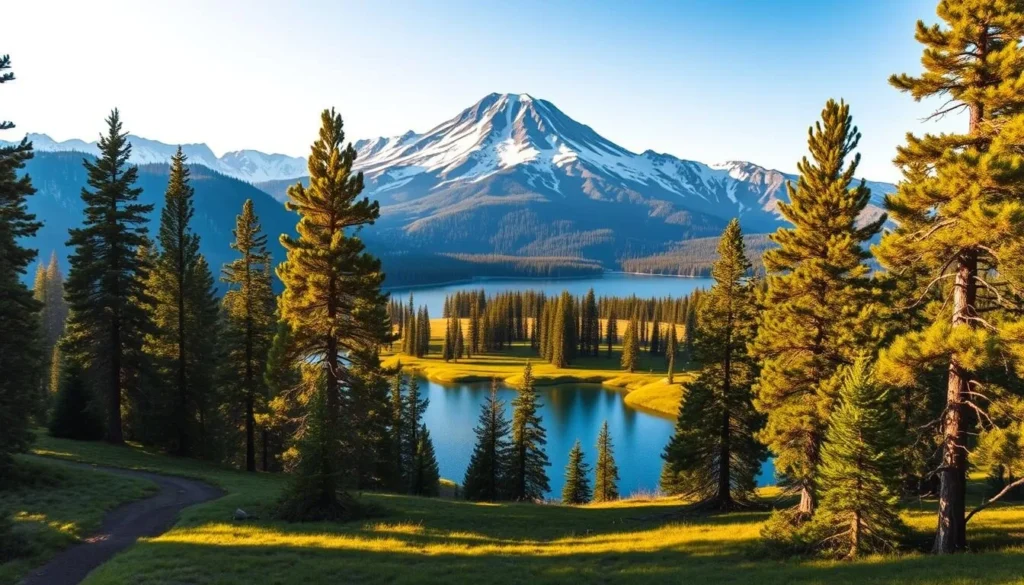
Park Overview and Geography
The park’s landscape is dominated by volcanic peaks, alpine lakes, and meadows, making it a unique geological showcase. At its center is Lassen Peak, rising to 10,457 feet and creating a dramatic backdrop visible from many points throughout the park. You’ll find four different types of volcanoes within the park boundaries: shield, composite, cinder cone, and plug dome. The park’s geography includes over 150 miles of hiking trails that wind through hydrothermal areas, forests, and past numerous lakes and streams. The varied elevation within the park creates distinct climate zones and ecosystems, supporting diverse plant and animal communities.
As you explore Lassen Volcanic National Park, you’ll discover its natural beauty and diverse geological features, making it an ideal destination for outdoor enthusiasts. With its rich volcanic history and stunning landscapes, the park is sure to leave a lasting impression.
Planning Your Visit to Lassen Volcanic National Park
A well-planned visit to Lassen Volcanic National Park can be a truly enriching experience, starting with understanding when and how to visit. The park offers a range of activities and sights that can be enjoyed throughout the year, but the experience can vary greatly depending on the season and your preparations.
Best Time to Visit
The best time to visit Lassen Volcanic National Park largely depends on your preferences and what activities you have planned. Summer is ideal for hiking and exploring the park’s many trails, while winter offers opportunities for snowshoeing and cross-country skiing. Spring and autumn can be less crowded, making them excellent choices for those who prefer fewer visitors.
Entrance Fees and Passes
Before entering Lassen Volcanic National Park, you’ll need to pay the entrance fee or show a valid pass. The park offers various passes, including an annual pass for frequent visitors. Fees collected help maintain the park’s facilities and natural resources, ensuring a great experience for all visitors.
Essential Items to Pack
When visiting Lassen Volcanic National Park, it’s crucial to pack wisely. Essentials include layers for fluctuating temperatures, sturdy hiking boots, sun protection (sunscreen, sunglasses, hat), and plenty of water. A detailed map is also vital due to limited cell service. For geothermal areas, consider a bandana or mask for sulfur odors, and microspikes or traction devices for icy trails during shoulder seasons.

By planning ahead and packing the right gear, you can have a safe and enjoyable visit to this unique national park.
Hiking Lassen Peak: Conquering the Largest Plug Dome Volcano
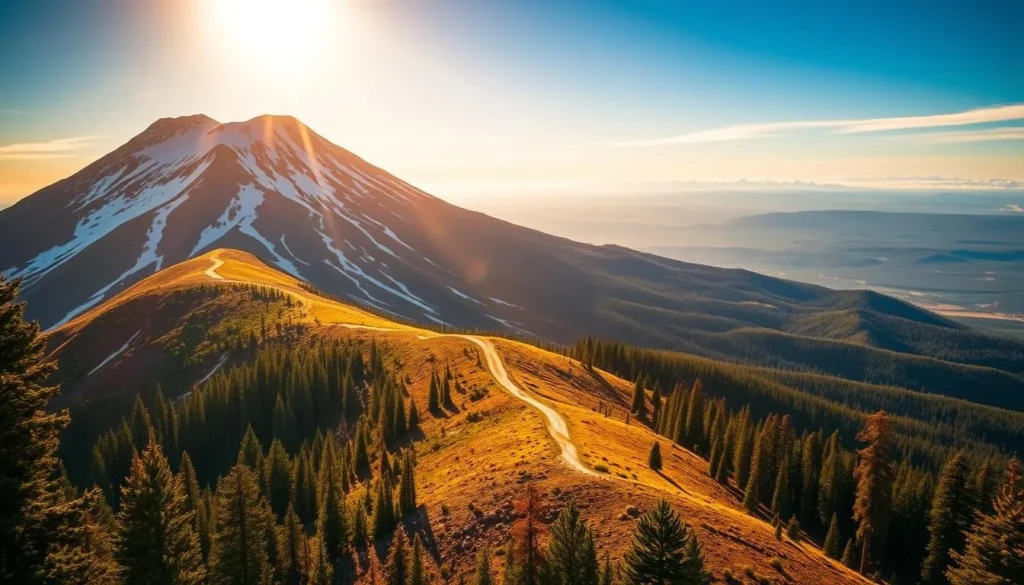
As the largest plug dome volcano in the world, Lassen Peak is a must-visit destination for hikers and nature enthusiasts. Located within Lassen Volcanic National Park, this challenging hike offers an unforgettable experience.
Trail Details and Difficulty Level
The Lassen Peak Trail is a strenuous 5-mile round-trip hike that starts at the Lassen Peak Trailhead. The trail takes approximately 4-5 hours to complete, with an elevation gain of 1,957 feet. Hikers should be cautious of loose rocks and enjoy the scenic views of mountain hemlock and pine trees along the way.
The trail includes switchbacks on a rocky ridge, providing hikers with options to either stop at the first summit or continue to the final summit. It’s essential to dress in layers, protect yourself from the sun, and be prepared for potential snow conditions.
What to Expect at the Summit
Upon reaching the summit of Lassen Peak, hikers are rewarded with breathtaking 360-degree views that extend over 100 miles on clear days. The summit area features a small crater and several steam vents, a reminder that Lassen is considered an active volcano.
- The distinctive plug dome formation of Lassen Peak is a result of thick lava creating a dome over the volcano’s vent.
- The summit offers an excellent vantage point to observe the park’s volcanic landscape, including nearby Chaos Crags and Brokeoff Mountain.
- Temperature at the summit can be significantly colder than at the trailhead, with strong winds common even on otherwise calm days.
- Hikers often spend 30-60 minutes at the summit to rest, take photos, and appreciate the accomplishment of climbing the largest plug dome volcano in the world.
Exploring Bumpass Hell: The Park’s Largest Hydrothermal Area
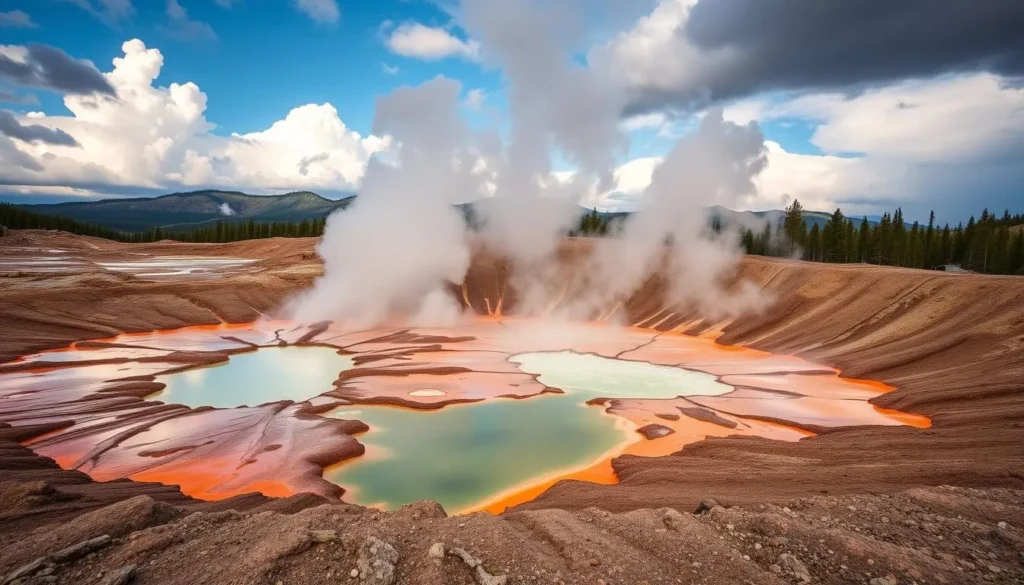
Bumpass Hell is a must-visit attraction in Lassen Volcanic National Park, offering a unique glimpse into the earth’s geothermal activity. This vast hydrothermal area is named after Kendall Vanhook Bumpass, who discovered it in 1864.
Boardwalk Trail Experience
The Bumpass Hell trail is a 3-mile out-and-back journey that takes you through a fascinating landscape of geothermal wonders. As you walk along the boardwalk, you’ll be surrounded by boiling mud pots, steaming vents, and colorful pools, creating an otherworldly atmosphere.
The trail is relatively easy, making it accessible to visitors of all ages. Along the way, informative signage provides insights into the geological processes that shape this dynamic landscape.
Geothermal Features to Observe
At Bumpass Hell, you’ll witness a diverse array of geothermal features, including boiling springs that reach temperatures of up to 240°F, making them some of the hottest hydrothermal features in the park. The area’s colorful basins are particularly striking, with vivid blues, greens, and oranges created by heat-loving bacteria and minerals dissolved in the water.
Other notable features include Big Boiler, the largest fumarole in the park, which releases superheated steam that can reach temperatures of over 300°F. The distinct smell of hydrogen sulfide is also noticeable throughout the area, a byproduct of the geochemical processes occurring beneath the surface.
As you explore Bumpass Hell, you’ll gain a deeper understanding of the geological forces that shape Lassen Volcanic National Park. This unique hydrothermal area is a testament to the park’s status as a true geological wonder, with its diverse range of geothermal features and hydrothermal activity.
Cinder Cone and the Painted Dunes: A Volcanic Wonderland
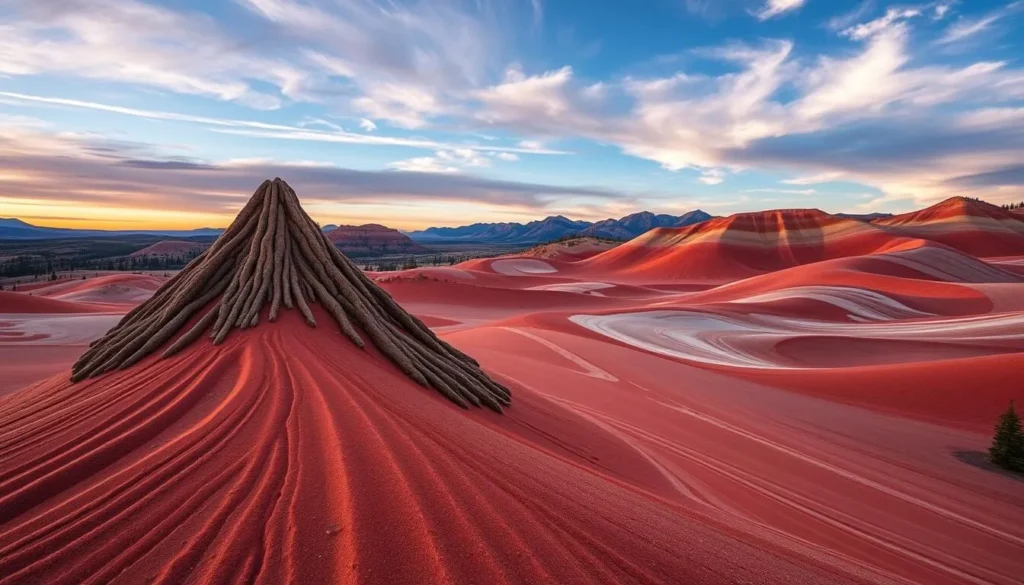
The Cinder Cone hike in Lassen Volcanic National Park is a must-do adventure, offering an unforgettable journey through a volcanic wonderland. This 4-mile hike, with an elevation change of 846 feet, is a moderately challenging trail that rewards hikers with breathtaking views.
Hiking to the Cinder Cone
The hike to the Cinder Cone starts at the Butte Lake parking area. As you ascend, you’ll be surrounded by woodlands and the Fantastic Lava Beds. Be prepared for loose rock and potentially high winds. The trail offers stunning views of the Painted Dunes, Jeffrey Pines, and even Lassen Peak in the distance. At the summit, you’ll enjoy a 360-degree panorama that includes Snag Lake, Butte Lake, and Prospect Peak.
The Cinder Cone trail is not only a visual treat but also an opportunity to explore the unique geology of Lassen Volcanic National Park. The trail takes you through diverse landscapes, from dense forests to barren, volcanic terrain. For those seeking a more immersive experience, a separate trail spirals down into the crater, allowing you to stand inside the volcano.
Viewing the Colorful Painted Dunes
The Painted Dunes are a highlight of the Cinder Cone hike, with their vibrant colors creating a surreal landscape. The dunes owe their red, orange, and brown hues to oxidized iron in the volcanic cinders. The colors are particularly vivid during the morning and evening, making these times ideal for photography. The contrast between the dark cinders of the cone and the colorful dunes creates an otherworldly scene, unlike anywhere else in the park.
As you explore the Painted Dunes, you’ll notice the resilience of nature, with hardy Jeffrey pines growing directly from the volcanic soil. This unique ecosystem demonstrates the ability of life to thrive even in the harshest environments. The Painted Dunes, formed during the volcanic eruptions of the 1650s, are a relatively young feature in the park, yet they have already developed a distinct character.
Lassen Volcanic National Park’s Stunning Lakes
With more than 200 lakes, Lassen Volcanic National Park is a haven for nature lovers and photographers alike. The park’s diverse landscape is dotted with lakes that offer a range of experiences, from serene surroundings to exciting recreational activities.
Manzanita Lake: Photography and Recreation
Manzanita Lake is a popular destination within the park, known for its picturesque views and recreational opportunities. Visitors can enjoy kayaking, canoeing, or simply taking in the tranquil atmosphere. The lake is surrounded by a walking trail, offering ample opportunities for photography, especially during sunrise and sunset when the light is golden.
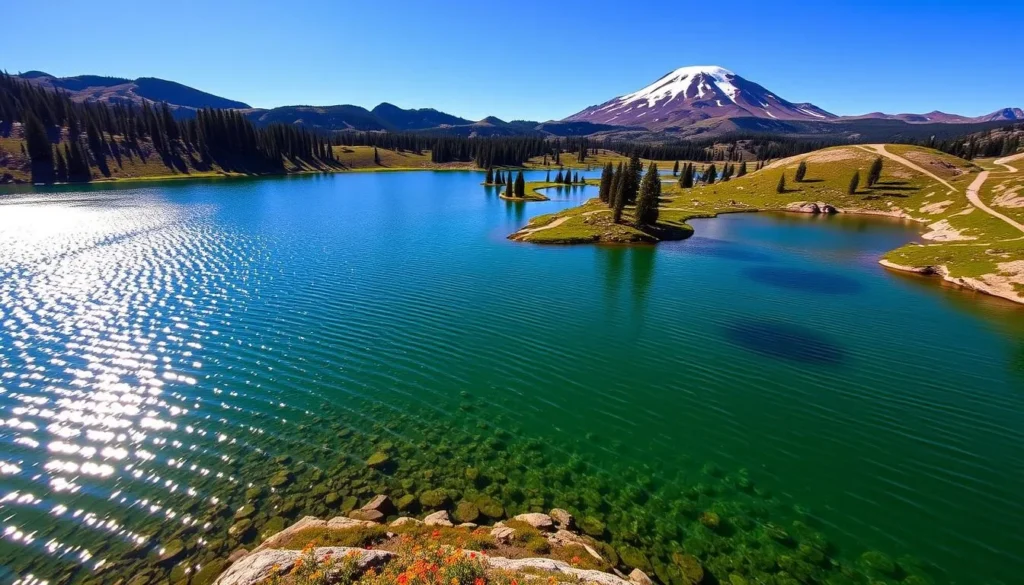
- Enjoy water activities like kayaking and canoeing on Manzanita Lake.
- Take a leisurely walk around the lake’s walking trail.
- Capture stunning photographs, particularly during the golden hours.
Lake Helen and Other Alpine Lakes
Lake Helen stands out among Lassen’s 200+ lakes as one of the most picturesque, situated at the base of Lassen Peak with stunning reflections of the mountain in its sapphire blue waters. Named after Helen Brodt, the first white woman to climb Lassen Peak in 1864, this alpine lake sits at an elevation of 8,200 feet.
- Explore Lake Helen, known for its crystal-clear and extremely cold waters.
- Visit other alpine lakes like Emerald Lake, Summit Lake, and Boiling Springs Lake.
- Hike the Cluster Lakes Loop trail for access to multiple alpine lakes.
The park’s numerous lakes offer a variety of experiences, from the serene to the adventurous, making Lassen Volcanic National Park a must-visit destination.
Sulphur Works and Other Geothermal Wonders
As you explore Lassen Volcanic National Park, you’ll discover unique geothermal features like Sulphur Works. The park is renowned for its volcanic activity, and these geothermal areas provide a fascinating glimpse into this natural phenomenon.
Experiencing Sulphur Works
Sulphur Works is one of the park’s most accessible geothermal areas, located near the park’s entrance. Here, you can witness the park’s volcanic activity up close, with steam vents and hot springs creating a surreal landscape. The area is easily accessible and provides a great introduction to the park’s geothermal wonders.

Devil’s Kitchen and Boiling Springs Lake
Beyond Sulphur Works, Lassen Volcanic National Park offers other geothermal experiences. Devil’s Kitchen, accessible via a 4.2-mile round-trip hike, presents a more immersive geothermal experience with roaring fumaroles, bubbling mud pots, and hot springs. Nearby, Boiling Springs Lake is another remarkable feature, heated to approximately 125°F by steam vents beneath its surface.
| Geothermal Feature | Location | Description |
|---|---|---|
| Sulphur Works | Near park entrance | Easily accessible geothermal area with steam vents and hot springs |
| Devil’s Kitchen | Warner Valley, 4.2-mile round-trip hike | Immersive geothermal experience with fumaroles, mud pots, and hot springs |
| Boiling Springs Lake | Warner Valley, 3-mile round-trip hike | Lake heated to 125°F by steam vents, creating a milky blue-green color |
These geothermal areas are best visited in the morning when temperatures are cooler and steam is more visible, creating more dramatic views. Whether you’re hiking to Devil’s Kitchen or Boiling Springs Lake, you’ll experience the unique geothermal wonders of Lassen Volcanic National Park.
Winter Activities in Lassen Volcanic National Park
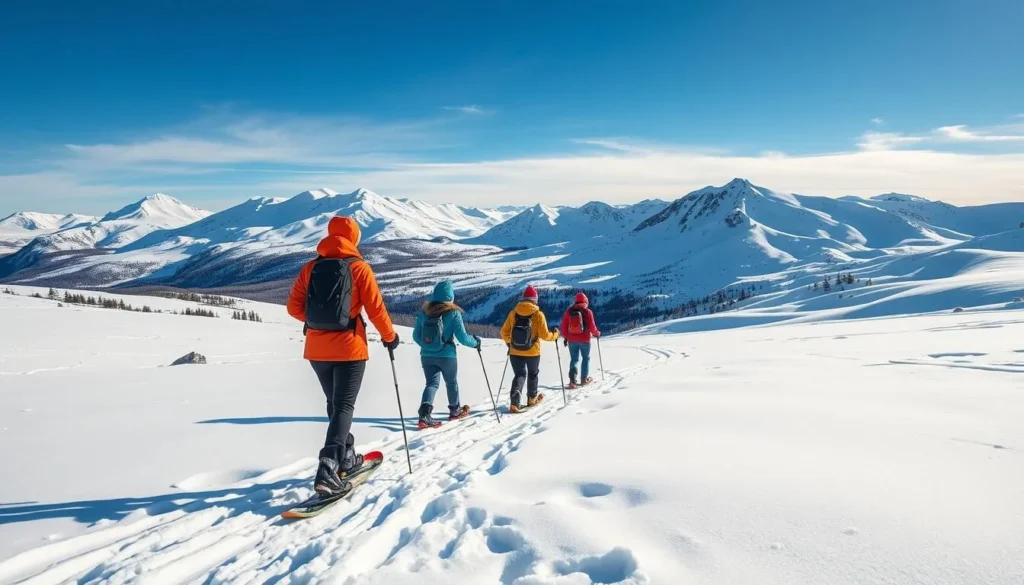
Winter visits to Lassen Volcanic National Park require preparation, but the experience is rewarding. The park transforms into a serene winter landscape, offering various activities for visitors.
Snowshoeing and Cross-Country Skiing
Snowshoeing and cross-country skiing are popular winter activities in Lassen Volcanic National Park. The park’s snow-covered trails provide a unique opportunity to explore its winter landscape. Depending on the snowpack, trails can remain covered until mid-June or even July, making micro-spikes a necessity. For those new to snowshoeing, consider joining a ranger-led snowshoe hike to explore the park’s winter wonders.
Winter Safety and Preparation
To ensure a safe and enjoyable visit, thorough preparation is essential. Here are key considerations:
- Check current weather and avalanche conditions before heading out, as the park’s steep terrain can present significant avalanche hazards after heavy snowfall.
- Dress in moisture-wicking layers, avoid cotton, and ensure you have waterproof outer layers, insulated gloves, warm hat, and appropriate footwear.
- Carry a detailed map, compass, and GPS device, and know how to use them, as navigation can be challenging in winter.
- Plan your activities according to daylight hours and always carry a headlamp or flashlight with extra batteries.
- The Kohm Yah-mah-nee Visitor Center is open Wednesday through Sunday during winter, providing a warm shelter, information, and restrooms.
By being prepared and aware of the conditions, you can have a safe and enjoyable experience in Lassen Volcanic National Park during the winter season.
Stargazing in Lassen: Dark Sky Experiences
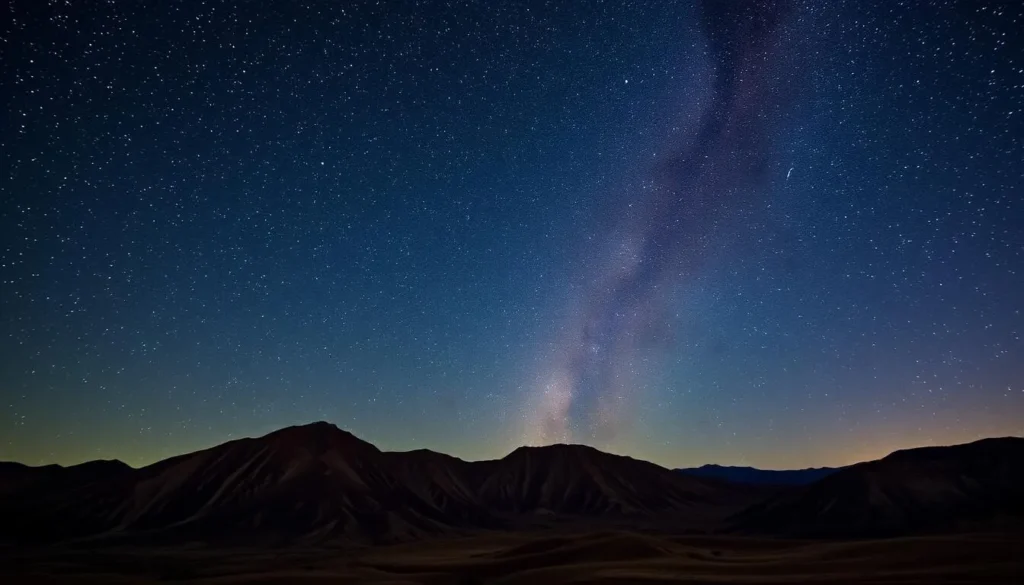
The pristine skies of Lassen Volcanic National Park make it a haven for stargazers and astronomy enthusiasts. With its incredibly dark skies, Lassen Volcanic National Park offers some of the most spectacular stargazing opportunities in the country. The park’s commitment to preserving its dark skies ensures a stellar experience for visitors.
Best Locations for Night Sky Viewing
For the best stargazing experience, head to locations within the park that are known for their minimal light pollution. Manzanita Lake is a popular spot, offering clear views of the night sky. Other locations, such as Lake Helen and the Cinder Cone area, also provide excellent stargazing opportunities due to their remote locations within the park.
Dark Sky Festival and Ranger Programs
The annual Lassen Dark Sky Festival, typically held in August, is a highlight for stargazers. The festival offers a weekend of special astronomy programs, guest speakers, and nighttime viewing with telescopes provided by astronomy clubs and park staff. Throughout the summer, the park also offers regular ranger-led astronomy programs, where you can learn about the night sky while observing it through telescopes set up at various locations.
These programs often include information about the park’s efforts to preserve its dark skies and the importance of dark sky conservation. The park is working toward official International Dark Sky Park designation, recognizing its exceptional starry skies and efforts to protect them from light pollution.
Accommodation Options In and Around the Park
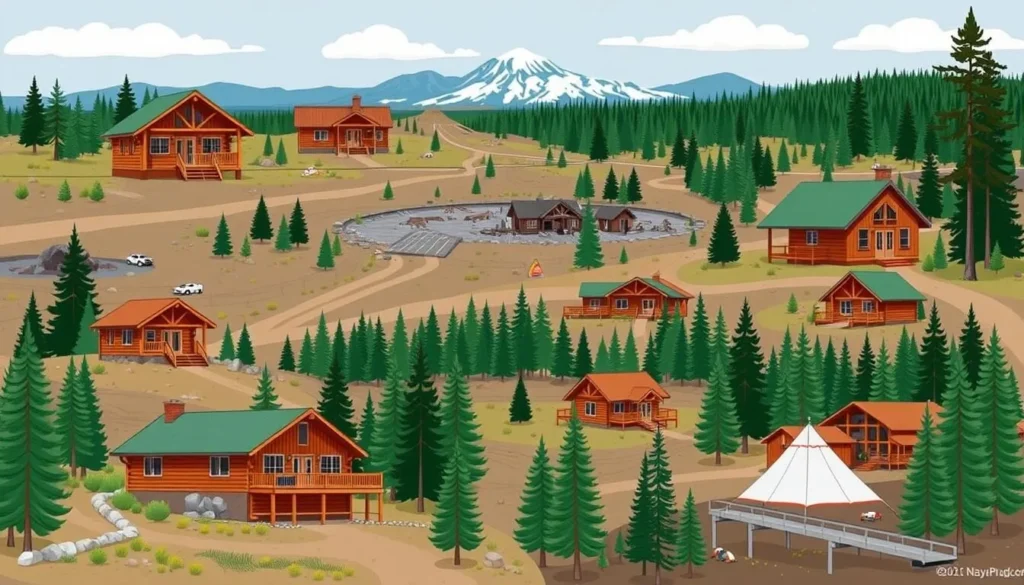
Your stay in Lassen Volcanic National Park can be made memorable with the right choice of accommodation, ranging from camping to luxury resorts. The park and its surroundings offer a variety of options to suit different preferences and needs.
Campgrounds Within the Park
For those who enjoy camping, Lassen Volcanic National Park has several campgrounds within its boundaries. Drakesbad Guest Ranch is a unique option that offers rustic cabins and lodge rooms, along with a dining room serving three meals daily. It operates seasonally from June through October and provides access to a naturally heated swimming pool and horseback riding.
Nearby Lodging and Resorts
If camping isn’t your preference, there are several lodging options just outside the park. Mill Creek Resort offers a quiet camping experience with 17 campsites by a creek, as well as cabins for a more comfortable stay. It’s about a 30-minute drive from the park’s main attractions. For a more luxurious experience, Highlands Ranch Resort near the northwest entrance offers luxury lodge rooms and private cottages, along with a full-service restaurant on site.
Other nearby communities such as Chester, Mineral, and Shingletown also offer a range of lodging options. For those looking for a wider selection of hotels and services, the towns of Redding and Susanville are about an hour’s drive from the park entrances. It’s advisable to make reservations at least 3-6 months in advance, especially during peak summer months.
Practical Tips for an Unforgettable Lassen Volcanic Experience
To make the most of your trip to this incredible national park, consider these practical tips for an unforgettable adventure. Visiting Lassen Volcanic National Park requires some planning to ensure a safe and enjoyable experience. Always check the park’s website for the latest information on road and trail conditions before you go, as the high elevation means it can snow significantly even in summer.
Packing the right gear is essential; you’ll need sturdy hiking boots, layers for changing weather, a headlamp, water bottle, binoculars, and a comfortable backpack. Prioritizing safety is also crucial, especially in geothermal areas, by respecting wildlife and being aware of your surroundings.
Other tips include arriving early to secure parking at popular trailheads, acclimating to the high elevation, and downloading offline maps due to limited cell service. Consider visiting during weekdays or shoulder seasons to enjoy the park with fewer crowds. By following these guidelines, you can have a memorable and enriching experience at Lassen Volcanic National Park, one of the world’s unique geological wonders.
